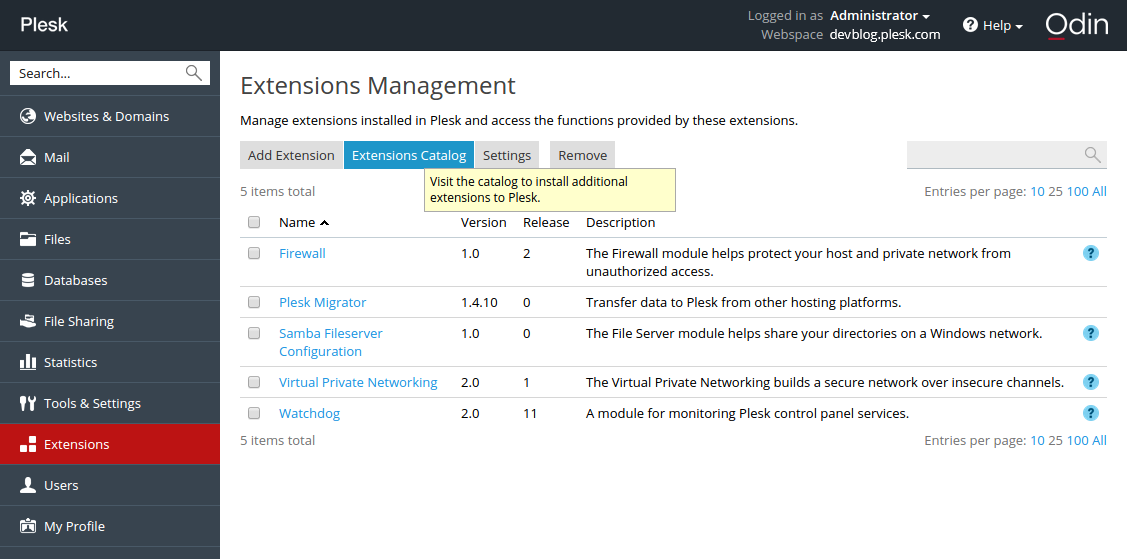
- #Letsencrypt plesk how to#
- #Letsencrypt plesk install#
- #Letsencrypt plesk software#
- #Letsencrypt plesk code#
If everything looks good, it issues a certificate for with the public key from the CSR and returns it to the agent. When the Let’s Encrypt CA receives the request, it verifies both signatures. The agent also signs the whole CSR with the authorized key for so that the Let’s Encrypt CA knows it’s authorized. Let’s Encrypt extension for Plesk gives all Plesk users the power to get a free Let’s Encrypt certificate with just a couple of clicks. As usual, the CSR includes a signature by the private key corresponding to the public key in the CSR. Let’s Encrypt is a certificate authority (CA) that allows you to create a free SSL certificate for your domains. To obtain a certificate for the domain, the agent constructs a PKCS#10 Certificate Signing Request that asks the Let’s Encrypt CA to issue a certificate for with a specified public key. Once the agent has an authorized key pair, requesting, renewing, and revoking certificates is simple-just send certificate management messages and sign them with the authorized key pair. We call the key pair the agent used an “authorized key pair” for. If the signature over the nonce is valid, and the challenges check out, then the agent identified by the public key is authorized to do certificate management for. Provisioning an HTTP resource under a well-known URI on Īlong with the challenges, the Let’s Encrypt CA also provides a nonce that the agent must sign with its private key pair to prove that it controls the key pair.For example, the CA might give the agent a choice of either: These are different ways that the agent can prove control of the domain. The Let’s Encrypt CA will look at the domain name being requested and issue one or more sets of challenges. To kick off the process, the agent asks the Let’s Encrypt CA what it needs to do in order to prove that it controls. This is similar to the traditional CA process of creating an account and adding domains to that account.
#Letsencrypt plesk software#
The first time the agent software interacts with Let’s Encrypt, it generates a new key pair and proves to the Let’s Encrypt CA that the server controls one or more domains.


#Letsencrypt plesk how to#
If you want to know how to do this in cPanel or GoDaddy click here. Let’s Encrypt identifies the server administrator by public key. This is a fairly easy visual guide to installing a Let’s Encrypt SSL on Media Temple or PLESK panel hosting accounts. Then, the agent can request, renew, and revoke certificates for that domain. First, the agent proves to the CA that the web server controls a domain. To understand how the technology works, let’s walk through the process of setting up with a certificate management agent that supports Let’s Encrypt.

This is accomplished by running a certificate management agent on the web server.
#Letsencrypt plesk install#
If the solution from => "New files of configuration for Apache web server were not built due to errors in configuration templates: mkdir: cannot create directory", in combination with the already mentioned " Plesk Repair Utility" and it's options doesn't solve your issue, I recommend backing up your domain contents and re - install your Plesk server.The objective of Let’s Encrypt and the ACME protocol is to make it possible to set up an HTTPS server and have it automatically obtain a browser-trusted certificate, without any human intervention.

where it is unclear, what you did wrong with your Plesk Control Panel, but your root cause are misconfigured permissions and vhosts - structures and due to MySQL - database server issues, I assume that an update/upgrade went wrong or didn't finish.
#Letsencrypt plesk code#
ERR '/opt/psa/admin/bin/vhostmng-structure' failed with code 1. Please check that database server is started and accessible. ERR Unable to connect to database: mysql_connect(): No such file or directory /var/run/mysqld/mysqld.sock (Error code: 2002).


 0 kommentar(er)
0 kommentar(er)
